LIMITING TEMPERATURE RISE
WHAT DOES IT MEAN FOR CARIBBEAN SIDS?


ISSUE 3 / JULY - SEPT 2022
ABOUT ECLAC/CDCC
The Economic Commission for Latin America and the Caribbean (ECLAC) is one of five regional commissions of the United Nations Economic and Social Council (ECOSOC). It was established in 1948 to support Latin American governments in the economic and social development of that region. Subsequently, in 1966, the Commission (ECLA, at that time) established the subregional headquarters for the Caribbean in Port of Spain to serve all countries of the insular Caribbean, as well as Belize, Guyana and Suriname, making it the largest United Nations body in the subregion.
At its sixteenth session in 1975, the Commission agreed to create the Caribbean Development and Cooperation Committee (CDCC) as a permanent subsidiary body, which would function within the ECLA structure to promote development cooperation among Caribbean countries. Secretariat services to the CDCC would be provided by the subregional headquarters for the Caribbean. Nine years later, the Commission’s widened role was officially acknowledged when the Economic Commission for Latin America (ECLA) modified its title to the Economic Commission for Latin America and the Caribbean (ECLAC).
Key Areas of Activity
The ECLAC subregional headquarters for the Caribbean (ECLAC/CDCC secretariat) functions as a subregional think-tank and facilitates increased contact and cooperation among its membership. Complementing the ECLAC/CDCC work programme framework, are the broader directives issued by the United Nations General Assembly when in session, which constitute the Organisation’s mandate. At present, the overarching articulation of this mandate is the United Nations Sustainable Development Goals.
Towards meeting these objectives, the Secretariat conducts research; provides technical advice to governments upon request; organizes intergovernmental and expert group meetings; helps to formulate and articulate a regional perspective within global forums; and introduces global concerns at the regional and subregional levels.
Areas of specialization include trade, statistics, social development, science and technology, and sustainable development, while actual operational activities extend to economic and development planning, demography, economic surveys, assessment of the socio-economic impacts of natural disasters, climate change, data collection and analysis, training, and assistance with the management of national economies.
The ECLAC subregional headquarters for the Caribbean also functions as the Secretariat for coordinating the implementation of the Programme of Action for the Sustainable Development of Small Island Developing States. The scope of ECLAC/CDCC activities is documented in the wide range of publications produced by the subregional headquarters in Port of Spain.
CONTENTS
Director’s Desk:
Limiting temperature rise to 1.5 degrees to stay aliveWhat does it mean for Caribbean SIDS?
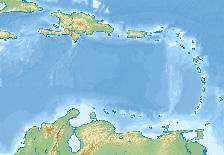
Climate Change, the Caribbean Sea, and the ocean economy – securing livelihoods of Caribbean people
Food Security in the Caribbean – A Policy Perspective
Global warming Impacts to Freshwater Resources in the Caribbean SIDS
Nature based solutions: Can they help us stay alive at 1.50C?º
Regular
MEMBER COUNTRIES ASSOCIATE MEMBERS
Antigua and Barbuda
The Bahamas
Barbados
Belize
Cuba
Dominica
Dominican Republic
Grenada
Guyana
Haiti
Jamaica
Saint Kitts and Nevis
Saint Lucia
Saint Vincent and the Grenadines
Suriname
Trinidad and Tobago
Anguilla
Aruba
Bermuda
British Virgin Islands
Cayman Islands
Curaçao
Guadeloupe
Martinique
Montserrat
Puerto Rico
Sint Maarten
Turks and Caicos Islands
United States Virgin Islands
FOCUS: ECLAC in the Caribbean is a publication of the Economic Commission for Latin America and the Caribbean (ECLAC) subregional headquarters for the Caribbean/Caribbean Development and Cooperation Committee (CDCC).
EDITORIAL TEAM:
Director Diane Quarless, ECLAC
Editor Johann Brathwaite, ECLAC
Copy Editor Denise Balgobin, ECLAC
Coordinator Artie Dubrie, ECLAC
Proof Reader Veera Deokiesingh-Fraser, ECLAC
Design and Layout Blaine Marcano, ECLAC
Liseanne Martin-Subero, ECLAC
Produced by ECLAC
CONTACT INFORMATION
ECLAC Subregional Headquarters for the Caribbean
PO Box 1113, Port of Spain, Trinidad and Tobago
Tel: (868) 224-8000
E-mail: spou-pos@eclac.org Website: www.eclac.org/portofspain
and upcoming meetings
of Recent ECLAC Documents and Publications 3 4 6 8 10 15 15
Features Recent
List
Heavy rainfall during May and July of both 2021 and 2022 had brought significant flooding to Guyana and Suriname. Relentless climatic events across the Caribbean in 2021 were compounded by the eruption of La Soufrière volcano, causing major population dislocation, damage and loss in Barbados, Saint Lucia and, Saint Vincent and the Grenadines. Similarly catastrophic multi-dimensional events were experienced in Haiti in 2021, with both a 7.2 magnitude earthquake coupled with hydroclimatic events.
The subregion is also inundated annually with massive sargassum blooms, resulting in significant negative impacts to coastal communities, public health, domestic sea transportation, tourism, and fisheries.
The 26th Conference of the Parties (COP) held in Glasgow in 2021 reaffirmed the commitment made by member states in the Paris Agreement to limit the global temperature increase to 1.5°C above pre-industrial levels. This was a limit strongly advocated by SIDS because of clear scientific prediction indicating significant damage and loss through sealevel rise, floods, droughts, and ecosystem degradation, when average global temperature rises above 1.5°C.
Given the multidimensional vulnerabilities of Caribbean SIDS, this issue of the FOCUS magazine considers the impact
LIMITING TEMPERATURE RISE TO 1.5 DEGREES TO STAY ALIVE - WHAT DOES IT MEAN FOR CARIBBEAN SIDS?
As is well known, Caribbean small island developing States (SIDS) are vulnerable to recurrent multidimensional shocks. These have lasting social, economic, and environmental impacts; effects expected to become further aggravated in a world with a persistently warming climate. The COVID-19 pandemic further exacerbates these impacts.

of climate change on select sustainable development priorities.

The first article addresses the social, economic, and environmental impacts of climate change on coastal and marine natural resources and ecosystems. It observes that climate change and climate variability are leading to negative impacts on sectors already reeling from the impact of COVID-19 and global political instability. The article assesses these potential impacts and presents options for adaptation to climate change.
Next, we explore the complexities of integrating factors such as the environment, health, trade and innovation into policies addressing food security policies related to agriculture, trade and investment, incomes nutrition and tourism are also considered.
The third article addresses the effect of global warming and climate change on freshwater resources in the Caribbean. It addresses the global water cycle, its relationship with climate and the expected increased aridity of this region due to climate change. Finally, recommendations for integrating freshwater management as a key component of climate change adaptation are suggested.

The exploration of nature-based solutions (NbS) to support climate change mitigation and adaptation while delivering
benefits for biodiversity and disaster risk reduction follows. The article provides two examples that demonstrate the use of NbS being implemented: Guyana’s Low Carbon Development Strategy (LCDS) and Mangrove Soil Sequestration Assessment of the Institute of Marine Affairs (IMA), Trinidad and Tobago.
As the Caribbean and the rest of the world prepare for the 27th United Nations Climate Change Conference, multidimensional vulnerabilities and challenges influenced by climate change affecting the areas discussed above demand strategic responses through advocacy, solidarity, partnership, and international cooperation. This edition is intended to put the spotlight on workable solutions to the multidimensional challenges of vulnerability experienced in the Caribbean.
FOCUS | 3 Issue 3 / July - Sept 2022
DIRECTOR’S DESK:
Patil et al (2016) noted that for Caribbean island States and Territories, the gross revenue generated from marine and coastal activities in 2012 was estimated at US$53 billion, equivalent to over 18 percent of the total GDP. Further, the marine and coastal environment and its natural capital represents significant potential for the development of the sustainable blue economy in the subregion (UNEP, 2019).

Notwithstanding this potential, many of these ecosystem goods and services are under threat from several sources, both human and natural. The anthropogenic pressures negatively impacting on the wider Caribbean’s nearshore marine resources include population growth, urbanization, coastal development, pollution, and over-exploitation of natural resources, including overfishing (UNEP, 2020). These are occurring against the backdrop of climate change and its impacts. These impacts further add pressure and exacerbate existing vulnerabilities (UNEP, 2020). Climate change and climate variability are increasingly impacting vulnerable marine and coastal ecosystems that Caribbean SIDS depend on, potentially resulting in an increasingly negative impact on economic sectors already struggling, a result of the COVID-19 pandemic and geopolitical instability. This article assesses the potential impact of climate change on the Caribbean marine and coastal environment
CLIMATE CHANGE, THE CARIBBEAN SEA, AND THE OCEAN ECONOMY – SECURING LIVELIHOODS OF CARIBBEAN PEOPLE
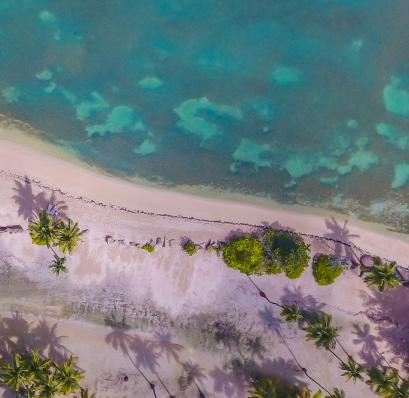 Laverne Walker *
Laverne Walker *
Caribbean people have always had a special relationship with the ocean and coast, with most of the population, infrastructure, and economic activities located along the coastal zone in Caribbean small island developing States (SIDS). Marine and coastal ecosystems provide employment, recreation, livelihoods, and ensure food security for millions of people across the subregion in the areas of fisheries, tourism, transportation, and energy.
and makes recommendations for adaptation.
CLIMATE CHANGE AND THE MARINE ENVIRONMENT
Increasing sea surface temperatures (SST) and marine heat waves
An assessment of SST in the Caribbean between the period 1982-2016 shows that SST have warmed at a rate of between 0.01°C and 0.04°C annually, with higher rates of warming observed in the Gulf of Mexico and the eastern Caribbean extending into the eastern tropical Atlantic (figure 1) (Climate Studies Group Mona (Eds.), 2020).
Increased SST and marine heat waves have negatively impacted economically important coastal and marine habitats such as coral reefs and seagrass beds (UN, 2021). The widespread coral bleaching event of 2005 resulted in high mortality of Caribbean coral reefs already under stress from disease and increased sedimentation.1 Coral reef mortality can impact negatively on reef fisheries, and put coastal communities and coastal infrastructure at higher exposure to damage from waves and storm surges associated with storms and hurricanes (UN, 2021). It is recognized that increases in sea surface temperatures are resulting in a greater proportion of category 4 and 5 hurricanes (figure 2) (ECLAC, 2022; UN, 2021). The National Ocean and
Atmospheric Administration (NOAA) predicted an above-average hurricane season for 2022, a result of higher-thannormal SST.2 This prediction makes it the seventh consecutive above-average hurricane season. Storms and hurricanes can have devasting consequences for coastal tourism and fisheries activities and can result in damage to coastal infrastructure. In September 2017, Hurricane Maria passed over the island of Dominica resulting in 65 lives lost3 and some US 1.3 billion in damage or 224 per cent of GDP.4 The damage from the 2017 hurricane season for four Caribbean islands was estimated to have exceeded US$ 1.5 billion (ECLAC, 2022).
Warmer seas have also led to the massive influx of Atlantic Sargasso in the Caribbean Sea, affecting the tourism and fisheries sectors, as well as coastal communities (Oxenford et. al. 2015; Doyle and Franks 2015).
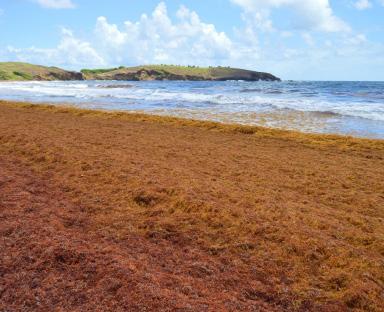
* Laverne Walker is a Sustainable Development Officer at the Economic Commission for Latin America and the Caribbean, Subregional Headquarters for the Caribbean. 1 Jones et al, 2005. The Effects of Coral Bleaching in the Northern Caribbean and Western Atlantic. https://www.coris.noaa.gov/activities/caribbean_rpt/SCRBH2005_07.pdf
2 NOAA, 2022. NOAA Predicts Above Normal 2022 Hurricane Season. Accessed on 22 July 2022: https://www.noaa.gov/news-release/noaa-predicts-above-normal-2022atlantic-hurricane-season
3 UN Women Accessed, 2 June 2022 https://wrd.unwomen.org/node/134
4 World Bank. 2017 A 360 degree look at Dominica Post Hurricane Maria. https://www.worldbank.org/en/news/feature/2017/11/28/a-360-degree-look-at-dominica-posthurricane-maria
4 | FOCUS
Figure 2: Caribbean Mangrove
Anse Lapin, Saint Lucia. Photo Credit Christopher Cox
Ocean Acidification
The world’s oceans act as large sinks, absorbing approximately one third of anthropogenic emissions of carbon dioxide (CO2). However, when CO2 is absorbed by seawater, chemical reactions occur that reduce the pH (increase the acidity of the water). “Ocean acidification” refers to this lowering of ocean pH. Ocean acidification negatively impacts the ability of calcifying animals’such as corals and shellfish - to construct their shells and skeletons (NOAA, 2021).
Over the last 20 years the Caribbean has experienced decreasing pH levels, which impacts on the ability of corals and shellfish to build skeletons.5

Sea level Rise
Another threat facing Caribbean SIDS is that of sea level rise. Many Caribbean coastal areas comprise of reclaimed land which house critical infrastructure such as air and sea ports, hotels, and roads. Increased sea levels mean increased risk of damage to this infrastructure. Parts

of Port of Spain in Trinidad, more specifically the waterfront and port area, are located on reclaimed land and are at risk to rising sea levels estimated at 1.25m by the end of 21st century.6 Regionally, Caribbean Sea level rise is estimated to be approximately 2.5 ± 0.4 mm/year (Climate Studies Group Mona (Eds.), 2020).
Rising sea levels present risks to the region’s freshwater resources and to its largely coastal population (IADB, 2014). For example, it is estimated that in Belize, sea level rise would negatively impact 49-60 per cent of tourist resort properties (CDKN 2014).
Climate change presents major security challenges for the Caribbean, and specifically the SIDS. This is attributed to the heavy dependence of life, livelihoods, and economies on the coast, magnified by the number of disasters which negatively impact populated areas. (Climate Studies Group Mona (Eds.), 2020). The subregion’s vulnerability is further exacerbated by its limited land reserve capacity (due to the prevalence of mountainous areas or flood plains), resulting in most investments being limited to areas that are vulnerable to impacts from extreme events. This affects the resilience of Caribbean development, including the nature of adaptation options that can be explored. Further, continuous damage from extreme weather events is costly and diverts funds from development initiatives to recovery and rehabilitation projects (Climate Studies Group Mona (Eds.), 2020).
(continued on page 12)
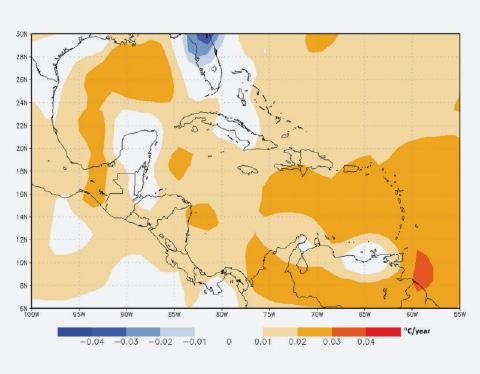
FOCUS | 5 Issue 3 / July - Sept 2022
Figure 1: Map of sea surface temperature trends within the Caribbean and surrounding regions over the period 1982 to 2016.
Source: Climate Studies Group Mona (Eds.), 2020
5 IUCN. 2018. Latin American and Caribbean countries threatened by rising ocean acidity, experts warn. IUCN Caribbean 6 Jeppesen, G. et al. 2015. Climate change adaptation case study: sea level rise in Trinidad and Tobago. IADB. Accessed on 30 June 2022: https://publications.iadb.org/ publications/english/document/Climate-Change-Adaptation-Case-Study-Sea-Level-Rise-in-Trinidad-and-Tobago.pdf
Figure 2: The number of named storms, hurricanes and major hurricanes per year passing through the North Atlantic and Gulf of Mexico from 1950-2019.
Source: NOAA 2020.
The outbreak of war between Russia and Ukraine in March 2022 has once again brought into sharp focus the precarious nature of food security for the Caribbean. This is because of the subregion’s high dependence on food imports, particularly grains such as wheat and soya, and edible oils. According to the FAO (2021), the Caribbean imports between 60 per cent and 80 per cent of its basic food requirements, in order to meet its domestic food needs, as well as to feed a significant number of visitors for its highly dependent tourism sector.

Notwithstanding this issue, a more enduring challenge to Caribbean food security is the likely agro-ecological changes which are anticipated over the medium to long term as a consequence of global climate change. According to ECLAC (2011), climate change is projected to generate increased rainfall intensity, as well as drought conditions in the Caribbean over the next 50 years. These conditions are likely to limit the extent to which the subregion could deploy its usual response, by focusing on domestic agricultural production as a principal strategy for mitigating future food insecurity (Lang and Barling, 2012 cited by Clapp et al, 2021). For instance, increased rainfall intensity has the potential for more frequent flooding events, while more intense drought conditions can reduce crop growth. Both of these developments could ultimately reduce agricultural output of the subregion’s largely rainfed agroproduction systems. Evidence of this reality has already been demonstrated by Ganpat and Isaac (2015) who observed
FOOD SECURITY IN THE CARIBBEAN –A POLICY PERSPECTIVE
Willard Phillips *
Among the several development issues facing Caribbean SIDS, food and nutrition security has emerged as a particularly important challenge given its role in affecting the health and well-being of all of its peoples. According to the Food and Agriculture Organization (FAO), (2021), as much as 67.5 per cent of the subregion’s population is currently living in moderate to severe food insecurity. This is related mainly to the cost of accessing food, as well as the quality of food accessed. This compares to a global average of 27.6 per cent.

that increased frequency of extreme weather events has resulted in significant losses of agricultural production over the recent decade.
Given the reality of global climate change, Mohammadi et al (2022) now point to a wider complex of factors such as environment, health, trade, and innovation, which need to be incorporated into food policies to properly address the subregion’s food and nutrition challenges. In the context of a broader set of factors being considered, this article explores policy considerations related to trade and investment, incomes, nutrition, and tourism variables. Apart from agricultural policy, each of these factors is succinctly examined below.
AGRICULTURAL POLICY:
Traditionally, agriculture has been an important subsector for many Caribbean economies. This reflects the colonial legacy of a plantation type agriculture in which former Caribbean colonies produced tropical agricultural commodities for export under preferential conditions to European metropolitan markets. Such exports have included - in various periods - sugar, tobacco, cocoa, coffee, citrus, cotton, rice and most recently bananas.
In recent decades, up to the early 1990s, the subregion’s agricultural value-added as a share of GDP ranged from a high of 43.7 per cent for Saint Vincent and the Grenadines to 9.1 per cent for Barbados (FAO, 2022). Over the past two decades, however this share has steadily declined to 19.5 per cent and 4.4 per cent respectively
for the same countries (Figure 1).
Although the subregion has enjoyed a positive contribution from its agricultural sector in the past, from the standpoint of food supplied from local sources, agriculture did not make as significant a contribution. This is because past agricultural policy emphasized the export of traditional commodities in order to supply preferential markets. At the same time, food imports continued to grow to meet the demands of an increasingly urbanized and wealthy population, as well as to provide for the subregion’s rapidly expanding hospitality and related services industry. Ultimately, evolving consumer tastes and preferences proved to be detrimental to locally produced food crops, which were never supported to the same extent as agricultural exports (McElroy and De Albuquerque, 1990). In this context, any food security strategy must include local food production1 with both public and private sector support to farmers and domestic food distributors in order to guarantee the subregion’s domestic food supply. Such support could be in the form of enhanced technical capacity as well as production subsidies.
TRADE AND INVESTMENT POLICY:
The growth in food imports has also been facilitated by trade liberalization and investment policies adopted by the subregion. As noted by Pemberton and Harris, 1988 cited by Mohammadi et al (2022), over recent decades, several Caribbean economies have been pursuing a cheap food policy supported by imports.
6 | FOCUS
* Willard Phillips is an Economic Affairs Officer at the Economic Commission for Latin America and the Caribbean, Subregional Headquarters for the Caribbean.
1 These are typically referred to as food crops and include green bananas, plantains, pumpkin, roots crops, vegetables, pulses and legumes (bodi, pigeon peas), and condiments among others.
While this strategy allows the Caribbean to exploit cost and scale economies from global food sources, it also exposes the subregion to supply chain disruptions and changes in global shipping costs which ultimately affect food supply reliability and prices, particularly for the small markets of the Caribbean. Distribution of imported food in many Caribbean markets is also practiced under oligopolistic conditions, which limit price efficiency. Low investment in domestic food distribution has also constrained the development of markets for locally produced food.
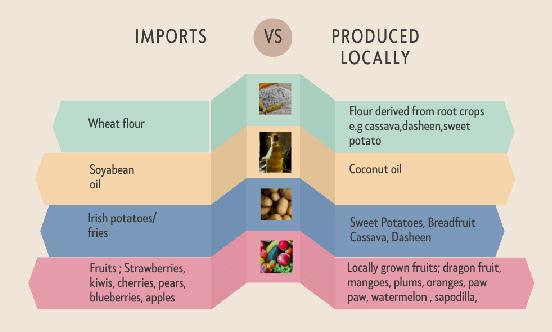
INCOMES POLICY:
As demonstrated by Sen (1981), falling real incomes, even in the presence of food availability, can also lead to food insecurity, since this reduces the capacity or entitlements of households to purchase food over time.
While data for the Caribbean are scarce, real incomes have increased only relatively slowly for Jamaica (5 per cent) and Haiti (8 per cent) between 2015 –2019 (ECLAC, 2022). At the same time, food inflation has reduced household purchasing power, implying that policies to enhance and sustain family incomes such as conditional cash transfers are also important considerations in ensuring food security.

NUTRITION POLICY:
As noted above, food consumption patterns in the Caribbean are highly influenced by North American food preferences.

The Caribbean continues to lack nutrition polices and legislation that address challenges faced by SIDS. Shifting consumption to include local produce in nutrition plans will enhance the familiarity
of consumers with alternatives that may have higher nutrition content. Strategies for fostering such a shift could include increased public education on the value and use of locally produced foods, as well as more local content requirements, particularly for publicly provided foods to schools and health care institutions.
TOURISM POLICY:
Although the Caribbean is a major tourism destination globally, its provision of hospitality services in the form of accommodations and food is supported largely by regional food imports. This is partly due to the structure of ownership of some hotel chains.
Estimates by the World Bank and FAO (2008) suggest that for the Organization of Eastern Caribbean Countries, only 32 per cent of the tourism sector demand is met from local sources. Jansen, Stern and Weiss (2015) also observe that as much as 60 per cent of fresh produce used in the hotel sector in these countries is imported. Given the subregion’s underdevelopment of other food value chains, the supply of other higher valued food inputs such as processed meats, dairy, cereals, and canned foods is met almost exclusively from imports, and constitutes a significant share of the subregion’s total food imports. Such high level of dependency on food imports makes the Caribbean tourism sector extremely vulnerable to food supply shocks, with wider economic and social implications, given the pivotal role of tourism in these economies.
By way of conclusion, renewed efforts to improve food security for Caribbean SIDS would require a broadened perspective, if this policy goal is to be achieved in the long run. These considerations should include diverse sector production variables, as well as social factors such as consumer tastes and preferences, incomes and nutrition and health.
FOCUS | 7
Issue 3 / July - Sept 2022
Figure 1: Agricultural Value Added as a Share of GDP- Selected Caribbean Countries: 1990-2020
Source: Based on FAOSTAT Data, 2022
Source: Infographic designed by Esther Chong Ling
(continued on page 15)
This article focuses on the interconnectivity of the global warming and climate change impacts on freshwater resources. In demonstration of this relationship, it will discuss evidence of freshwater distribution and the natural water cycle. With a focus on the Caribbean, the article will present the impacts of global warming to the precipitation patterns and other climate change drivers contributing to reduced freshwater availability in this region. It concludes with recommendations that water resources management should be integrated into climate change adaptation polices, and institutional frameworks.
GLOBAL DISTRIBUTION OF WATER RESOURCES
It is estimated that two-thirds of the Earth’s surface is covered with water. Of this amount, around 97.5 percent is held in the oceans as salt water.
The remaining 2.5 percent is fresh water found in glaciers and ice, as groundwater, and in rivers and lakes. Less than 1% of Earth’s water is fresh water supply accessible for human consumption. This proportional distribution of Earth’s water is illustrated in Figure 1.
The Water Cycle4 and Climate Change:
The water cycle is the continuous circulation
GLOBAL WARMING IMPACTS TO FRESHWATER RESOURCES IN CARIBBEAN SIDS

Water, by its continuous movement within the Earth and the atmosphere is the primary medium through which climate change influences this planet’s natural, physical, chemical and biological systems and processes. Global warming is affecting seasonal rainfall variabilities, precipitation rates, and resulting in uncertainties of freshwater supplies. Fresh water1 including both surface and ground is a finite resource and essential to sustaining human health, economic, environmental and ecosystem services (UN 2021). The Caribbean small island developing States (SIDS) are highly vulnerable to the impacts of climate change due to global warming. With respect to climate change impacts to freshwater resources, the Intergovernmental Panel on Climate Change (IPCC) in its Sixth Assessment report2 presented that there is a medium to high level of confidence that with increasing global warming above 1.5 oC, the Caribbean will become drier due to decreases in precipitation levels. This reduced precipitation and aridity will severely affect the safe availability and accessibility of freshwater resources (IPCC 2021).3
of water between the atmosphere, land and the ocean. This distribution and the changing physical states5 of water is a vehicle for redistribution of Earth’s energy, and influences the behaviour of the planet’s weather, climate, and other environmental systems (WorldBank 2022b). It is one of the main planetary systems regulating all life on earth (Sohoulande et al., 2016) . This is illustrated through the water-cycle (see Figure 2- the natural water-cycle).
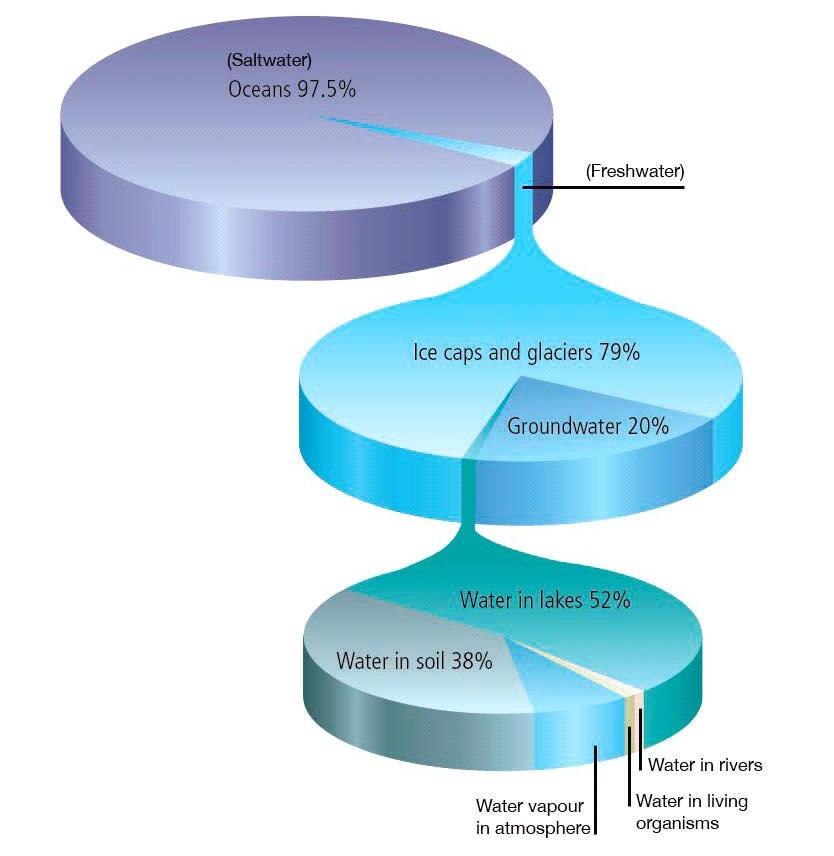
Climate change impacts on the water cycle: Rising global temperatures and climate change intensify the movement of water through the water-cycle. As air temperature increases due to global warming, more water evaporates. Warmer air holds more water vapour thereby further amplifying the global warming effects.6 Climate change and climate variability have impacts on precipitation patterns,7 snow cover and increased frequency of flooding and droughts.8 These impacts result in freshwater scarcity to meet ecological, social, and economic needs (UNICEF 2022).
Fresh water resources in the Caribbean: The Caribbean is heavily dependent on rainfall as its major source of freshwater, obtained from direct rain and through surface and ground water systems.9 The freshwater resource supplies varies across the subregion. This variation is due to such factors as climate change, rainfall pattern
and intensity, and geology., (FAO, 2011). The World Resources Institute (WRI) identified seven Caribbean countries as having “extremely high” levels of water stress.10 These countries are Dominica, Jamaica, Saint Vincent and the Grenadines, Trinidad and Tobago, Antigua and Barbuda, Barbados and Saint Kitts and Nevis. The latter three are also designated water scarce (WRI 2013).
Freshwater security is a major challenge
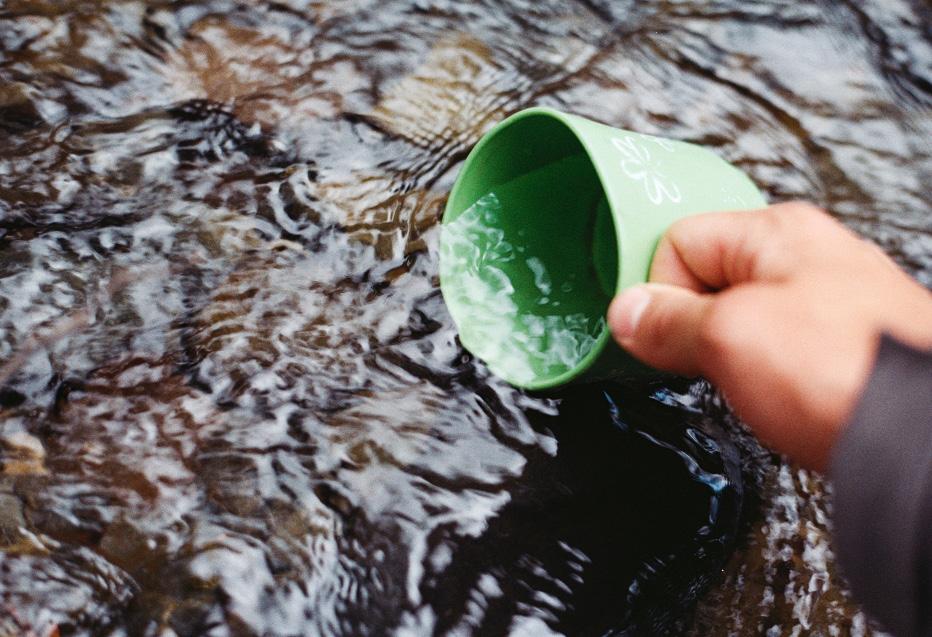
* Artie Dubrie is Coordinator of the Sustainable Development and Disaster Unit at the Economic Commission for Latin America and the Caribbean, Subregional Headquarters for the Caribbean.
1 Freshwater does not include water located in the oceans and seas. Ocean water is normally referred to as saltwater. Freshwater is naturally occurring water that contains low concentration of salts.
2 International Panel for Climate change (IPCC) have the responsibility for assessing the science related to climate change. The IPCC was set up in 1988 by the World Meteorological Organization (WMO) and United Nations Environment Programme (UNEP) to provide policymakers with regular assessments of the scientific basis of climate change, its impacts and future risks, and options for adaptation and mitigation reference: see link at: https://www.ipcc.ch/site/assets/uploads/2021/07/AR6_FS_What_ is_IPCC.pdf
3 Other socio-economic factors negatively affecting the availability of freshwater supplies are: pollution, the overexploitation of surface, ground and coastal waters, change in land use, saline intrusion, soil erosion, inadequate wastewater treatment and the lack thereof.
4 The water cycle is also called the hydrologic cycle.
5 These physical states are gas, liquid and solid.
6 Water vapour is a greenhouse gas. Due to its heat trapping ability, it plays a key role in the global climate system.
7 Precipitation Patterns or rainfall patterns describes geographical, temporal and seasonal distribution of rainfall
8 Note that these impacts are not globally uniform.
8 | FOCUS
Artie Dubrie *
Figure 1: The Global Distribution of Earth’s Water Resources
Reference: World Bank 2022a.
for many Caribbean countries, with some having high scarcity11 due to such factors as pollution, watershed degradation, saltwater intrusion, and increasing demand for potable water. Hydroclimatic impacts including floods, landslides, storms, seawater storm surges and droughts further reduces the availability of freshwater resources (CARICOM, 2021).
CONCLUSIONS AND RECOMMENDATIONS
The increasing trend in global warming and resulting reduced precipitation due to climate change impacts, will exacerbate freshwater stress in the Caribbean. Gaining a better understanding of this vulnerability, and integrating the management of freshwater systems to climate change adaptation measures are necessary for sustainable development. Selected recommendations for this purpose are as follows:
1. Water resources management: Sustainable water resources management must be integrated with climate change polices, financing, legislation and institutional framework(s). This integration must be data-driven and systemized at all levels including, inter alia, the protection and restoration of watersheds, water use efficiency, forestry management,
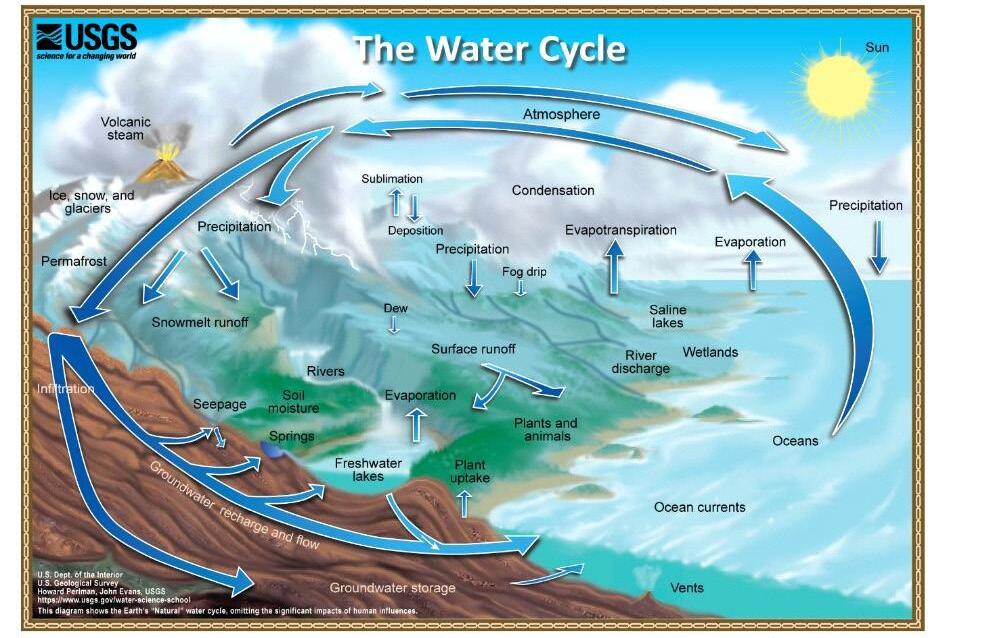
land-use and coastal zones planning and management, pollution prevention and control, health and sanitation, human and institutional capacity building.
2. Disaster Risk Management: Fresh-water resources management must be a defined component in the planning, mitigation, forecasting12 and preparedness, response and recovery stages of disaster risk management. This association is necessary, considering that most of the hazards due to climate change impacts are water-related, including flooding, landslides, coastal erosion, fresh water salination, and droughts.13
3. Integrating climate change research, scientific assessments and adaptation strategies in the planning, development and operations of water resources management systems and infrastructures. This will also require the building of capacities, knowledge sharing and engagement of all stakeholders, including local and national authorities, women, youth, indigenous and community groups, academia and the private sector.
REFERENCES
CARICOM (2021), The Caribbean Community: CARICOM Today: Ministerial Meeting on Water Security for Small Island Developing States of the Caribbean, link:
9 Countries also employ salt-water desalination to meet potable water demands.
https://today.caricom.org/2021/04/14/ ministerial-meeting-on-water-securityfor-small-island-developing-states-of-thecaribbean/, cited July 20, 2022
FAO (2011), Food and Agriculture
Organisation: The State of the World’s Land and Water Resources for Food and AgricultureManaging systems and risk: link: https://www. fao.org/3/i1688e/i1688e.pdf, sited June 1, 2022
IPCC (2021), Intergovernmental Panel on climate change, link: https://www.ipcc.ch/ report/ar6/wg1/downloads/factsheets/ IPCC_AR6_WGI_Regional_Fact_Sheet_ Small_Islands.pdf, cited July 26, 2022
Moss, S. and Moultrie, S. (2014). Ecological Gap Analysis: GEF FSP Sustainable Network of MPAs – The Bahamas. Nassau, Bahamas: The Bahamas Environment Science and Technology Commission (BEST) Commission, cited July 26, 2022

Sohoulande, Clement & Djebou, Sohoulande & Singh, Vijay. (2016). Impact of climate change on the hydrologic cycle and implications for society. Environment and Social Psychology. 1. 10.18063/ESP.2016.01.002.
World Bank (2022a), Earth’s water, the World Bank, link: https://olc.worldbank.org/sites/ default/files/sco/E7B1C4DE-C187-5EDB3EF2-897802DEA3BF/Nasa/chapter1.html, cited July 15, 2022
World Bank (2022b), Earth’s water, the World Bank, link: https://olc.worldbank.org/sites/ default/files/sco/E7B1C4DE-C187-5EDB3EF2-897802DEA3BF/Nasa/chapter1.html, cited July 15, 2022
WRI (2013) World Resources Institute, Water stress by country available at: https://www.wri. org/data/water-stress-country, cited July 14, 2022
UNICEF (2022): United Nations International Children's Emergency Fund, Water and global crisis: 10 things you should know, link: https://www.unicef.org/stories/water-andclimate-change-10-things-you-should-know, cited July 14, 2022.
UN (2021), United Nations International Decade for Action ‘Water for Life’2005-2015, link: https://www.un.org/waterforlifedecade/ iwrm.shtml, cited September 3, 2021.
10 Water Stress occurs when the demand for water exceed the available amount during a set period or when poor quality restricts intended use; available at: https:// www.eea.europa.eu/archived/archived-content-water-topic/wise-help-centre/glossary-definitions/water-stress#:~:text=in%20your%20browser.-,HelpCenter%20 Definition,%2C%20dry%20rivers%2C%20etc.), cited July 14. 2022
11 Water Scarcity is when there is a scarcity in availability due to such factors as shortages in regular supplies or due to lack of adequate infrastructure, reference UN Water, available at https://www.unwater.org/water-facts/scarcity/, cited July 1, 2022.
11 See for example: Caribbean Drought and Precipitation Monitoring Network (CDPMN) being undertaken by the Caribbean Institute for Meteorology and Hydrology (CIMH Caribbean Regional Climate Center, link https://rcc.cimh.edu.bb/climate-monitoring/caribbean-drought-and-precipitation-monitoring-network/, cited August 14, 2022
12 Global Facility for disaster Reduction and Recovery, link: https://www.gfdrr.org/en/crews-caribbean cited June 16, 2022
FOCUS | 9 Issue 3 / July - Sept 2022
Figure 2: The Natural Water Cycle
Reference: The natural water cycle, https://www.usgs.gov
It is estimated that two-thirds of the Earth’s surface is covered with water. Of this amount, around 97.5 percent is held in the oceans as salt water.
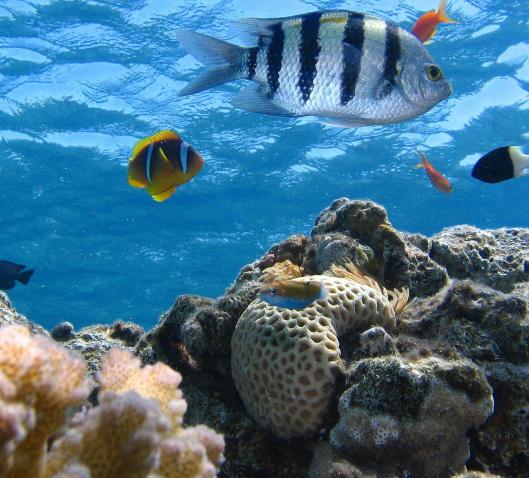
The concept of nature-based solutions was first introduced by The International Union for Conservation of Nature (IUCN) at their 2016 World Conservation Congress to mean “actions to protect, sustainably manage and restore natural or modified ecosystems, that address societal challenges effectively and adaptively, simultaneously providing human well-being and biodiversity benefits” (UNEP/IUCN 2021). By definition, nature-based solutions are not a new concept and it is used to describe ecosystems and their functions. Other similar concepts are ecosystem-based adaptation, ecosystem management and ecosystem-based management. But the IUCN’s concept of nature-based solutions is specifically designed as a climate change mitigation strategy.
In keeping with limiting global warming well below 20C - preferably 1.50C - the IUCN estimated that naturebased solutions could support a yearly emissions reduction of at least 5 GtCO2e 2 by 2030 and 10 GtCO2e by 2050 effectively cutting back on global CO2 emissions. But this desired effect must be “backed by rapid ambitious and sustained abatement of fossil fuels and other industrial emissions....
NATURE BASED SOLUTIONS: CAN THEY HELP US STAY ALIVE AT 1.5OC?
Elizabeth Thorne *
The global community claims to be committed to finding a solution to arresting rising global temperatures limiting global warming to well below 20C, preferably 1.50C (UNFCCC, 2022)1, to ensure that all life, livelihoods and the overall health and welfare of ecosystems animals and humans are secured (IPCC 2018). The International Panel on Climate Change (IPCC) reports paint a picture that shows increased intensity and frequency of climatic conditions and extreme events as emerging trends (IPCC 2018). Global warming beyond 1.50C will be devastating; in fact, projections show at 20C warming many ecosystems will fail and, without the provision of these life sustaining ecosystem services, life will not be possible (IPCC 2018).
governments must also be committed to decarbonizing their economies with support from civil society” (UNEP/ IUCN 2021). Having multiple benefits, allowing synergies, and minimizing trade-offs, these solutions must be carefully designed, implemented and monitored. To help in that effort, the IUCN set the Global Standard for Nature-based Solutions which involves very specific criteria that guide the design, execution, and evaluation of nature-based solutions.
Tietenberg (1996) believed the environment is a composite economic asset that provides several services to ensure the survival of mankind and life on Earth. But as an asset, provisions must be made to preserve its value and address its depreciation, so it can continue
to provide the valuable services that will preserve life on Earth. The by-products of human activities and processes are returned to the environment as waste. In this case, pollutants such as CO2 can be absorbed by the environment, but only if it has the absorptive capacity to do so (Tietenberg, 1996). Nature-based solutions3 can play a role here, as part of a wider strategy alongside stringent decarbonization initiatives.
Between 1990 and 2019 there is evidence to show a steady increase in greenhouse gases from all sources (See figure 1). These increases demonstrate the need to purposefully design mitigation strategies to meaningfully reduce global CO2 emissions and other greenhouse gases.

For these nature-based solutions to
* Elizabeth Thorne is an Economic Affairs Assistant at the Economic Commission for Latin America and the Caribbean, Subregional Headquarters for the Caribbean.

1 UNFCCC Paris Agreement: https://unfccc.int/process-and-meetings/the-paris-agreement/the-paris-agreement
2 The carbon dioxide equivalent or CO2 equivalent is a metric measurement that compares emissions from different greenhouse gases based on their global-warming potential (GWP). Converting greenhouse gases to its carbon dioxide equivalent facilitates the comparison of these emissions with the carbon dioxide equivalent with the same global warming.
3 An example of an effective Nature-based solution would be healthy well managed mangroves would have the potential to reduce the impact of flooding for over 18 million people worldwide, while saving up to US$57 billion in flood damages in China, India, Mexico, USA and Viet Nam annually (IUCN 2022) https://www.iucn.org/ resources/issues-brief/ensuring-effective-nature-based-solutions
10 | FOCUS
Figure 1: Global greenhouse gas emissions from all sources between 1990 and 2019 (Reproduced from UNEP 2020)
Source: IUCN, UNEP 2021
actively work as part of a mitigation strategy, a holistic multifaceted overarching vision of decarbonization alongside stringent policy measures must be in place. The main objective of these strategies is to absorb CO2 emissions to the extent that there is an overall net zero emissions target. But the status and health of ecosystems is paramount in determining the absorptive ability of existing ecosystems. Furthermore, knowing the economic value of the various ecosystem services can guide the development of innovative financial instruments, through which these ecosystems could be preserved or rehabilitated to ensure they are functioning at their full capacity, and therefore able to move the subregion and the world towards a net zero CO2 emission target in the future.
The Green Climate Fund (GCF)4 under the Paris Agreement is tailored to serve and support developing countries to assist in the delivery of their Nationally Determined Contributions (NDC), aimed at reducing their GHG emissions while building climateresilient economies. The UNFCCC has referenced the use of ecosystems services to assist in addressing global warming.5 An example of this thrust is a GCF project in Uganda, which is geared towards enhancing the adaptive capacities of their wetlands, to reduce Uganda’s contribution to GHGs, assisting in the fight against climate change.6
CARIBBEAN INITIATIVES
The Caribbean has engaged in a few similar initiatives. First, Mercer et al (2012) examined the use of ecosystembased adaptation (EbA) as an avenue through which SIDS could combat
4 See more: https://www.greenclimate.fund/about
climate change and its impacts. The Millennium Ecosystem Assessment (MEA)7 revealed an overall decline in the health of the subregion’s ecosystems hampering their ability to deliver wellfunctioning ecosystem services.
An estimated one-third of Caribbean reefs were threatened by coastal development, sedimentation, and pollution from land-based sources, and over 60 per cent overfishing recorded on its reefs. The subregion’s marine environment was further threatened by shipping activities, ineffective management of protected areas and warming sea temperatures. The MEA estimated the annual net economic value of coral reefs and the services they provide to be in the vicinity of US$3.1 billion, while contributions from fisheries, dive tourism and shoreline protection were approximately US$4.6 billion. As these subregional ecosystems degrade economic losses are inevitable (Ministry of Planning and Development, GoTT, 2022).


Effective nature-based solutions have also been applied to Disaster Risk Reduction; it offers governments and other stakeholders the opportunity to integrate natural ecosystems into DRR strategies. The Word into
Action: Nature-based Solutions for Disaster Risk Reduction guide provides recommendations on how this can be achieved.8
Nationally governments have been applying nature-based solutions to support natural resources management, mitigation, and adaptation to climate change. These are illustrated in the following two examples:
1. The Trinidad and Tobago the Institute of Marine Affairs (IMA) Mangrove Soil Sequestration Assessment, a blue carbon9 project, funded by the British High Commission. It facilitates the assessment of the natural capacity of this country’s land and coastal ecosystems. Under this project the IMA reported a value for water purification services to be an estimated US$88 million annually. The Northern Forest Range soil retention services was estimated at US$622 million annually, and shoreline protection ranged between US$3 to US$133 per hectare annually.10 This project is poised to provide essential data which would determine a concrete monetary value for the carbon storage in Trinidad and Tobago’s mangrove forests. This would ultimately inform the preservation, enhancement and integrity of this ecosystem which can be achieved through investment, earning foreign exchange for Trinidad and Tobago and contribute to building its resilience. (Ministry of Planning and Development 2022)
5 See more: https://www.greenclimate.fund/story/using-ecosystems-counter-climate-crisis-only-natural#
6 See more: https://www.greenclimate.fund/story/using-ecosystems-counter-climate-crisis-only-natural#
7 The overall objective of The Millennium Ecosystem Assessment (MEA) was to assess the health of ecosystems and determine how changes to these systems could affect human well-being. The results were used to advise on the conservation and sustainable utilization of these valuable ecosystems (https://www.millenniumassessment.org/en/ About.html#).
8 Words into Action: Nature-based Solutions for Disaster Risk Reduction (undrr.org)
9 Blue carbon is the term used to describe coastal and marine ecosystems that could capture and store carbon both within their structure and the sediments below. Research has shown that these systems are capable of storing from two to four times more carbon that terrestrial ones, making these a strong contender as nature-based solutions to combat climate change (Intergovernmental Oceanographic Commission website: https://ioc.unesco.org/our-work/blue-carbon#:~:text=Blue%20carbon%20 ecosystems%20%E2%80%93%20mangroves%2C%20tidal,based%20solutions%20to%20climate%20change). In keeping with this, blue carbon projects are those that assess the reduction in greenhouse gas emissions that can be attributed specifically to the project. These are implemented primarily as climate mitigation strategies (https:// reefresilience.org/management-strategies/blue-carbon/blue-carbon-projects/#:~:text=A%20blue%20carbon%20project%20uses,%2C%20sustainable%20use%2C%20 and%20restoration) .
FOCUS | 11 Issue 3 / July - Sept 2022
10 The mangrove forests stand at 7500 hectares and will aid Trinidad and Tobago in its commitment to the Paris Agreement.
Figure 3: Caribbean coral reef (image courtesy Adobe Stock )
(continued on page 14)
CLIMATE CHANGE, THE CARIBBEAN SEA, AND THE OCEAN ECONOMY – SECURING LIVELIHOODS OF CARIBBEAN PEOPLE (CONTINUED)
RESPONSES
The issues of climate change, species and habitat loss, and pollution, cannot be addressed in silos, due to the economic, social, and environmental connectivity of these systems. Sustainable management of marine and coastal resources therefore requires a holistic approach7 (World Ocean Review, 2021).
This drive towards more holistic management approaches does not only pertain to the natural environment, but also to how agencies at the national and regional level cooperate and coordinate to ensure efficiencies of scale. Outlined below are management approaches which incorporate climate change as part of the system and present a best practice for regional coordination.
Ecosystem-based adaptation is a strategy for adapting to climate change that harnesses nature-based solutions 8 and ecosystem services by protecting coastal habitats. 9 Ecosystem-based adaptation (EbA) involves people using biodiversity and ecosystem services to adapt to the adverse effects of climate change and promote sustainable development. Like community-based adaptation (CBA), EbA has people at its center, and uses participatory, culturally appropriate ways to address challenges, with a strong emphasis on ecological and natural solutions. 10 Use of this management approach requires an understanding of climate impacts and adaptation responses that can be used to advance climate resilience (UN, 2021). The Caribbean Biodiversity Fund with the support of the German Government, established an Ecosystem Based Adaptation Facility which “seeks to help people
Working Together Regionally to Develop Early Warning Systems
The Consortium of Regional Sectoral Early Warning Information Systems was established in 2017. It consists of a group of seven regional sector agencies and a regional climate service provider (the CIMH) committed to the co-design, co-development and co-delivery of user-specific and actionable climate information products and services. As a formal, inter-sectoral collaboration mechanism, the Consortium arrangement allows for the identification of areas of joint complementary work and overlapping interests as a basis for partnership (Climate Studies Group Mona (Eds.), 2020). In 2019, the Consortium developed a Regional Roadmap and Plan of Action to guide the implementation of a long-term coordinated, multisectoral climate services portfolio for the period 2020-2030. The consortium has also developed tailored climate products and services in the agriculture and food security, disaster risk management, energy, health, tourism, and water sectors (Mahon, 2022).

Partners encompassing the Consortium of Regional Sectoral Early Warning Information Systems
Source: Mahon et al. 2018
adapt to the adverse effects of climate change, reduce disaster risk, and build resilient ecosystems and economies.” 11
Marine protected area networks 12 help to promote mitigation and adaptation to climate change by supporting ecosystem resilience (Roberts et al., 2017). More resilient ecosystems can cope with stressors and recover from adverse circumstances, ensuring the maintenance of ecosystems and provisioning services necessary for human well-being (Chong, 2014). To ensure ecosystem resilience, it is important that local stressors (e.g., pollution and destructive fishing pressures) are reduced and managed (UN, 2021). Efforts towards the creation of such a network within
the Caribbean are being led by the Specially Protected Areas Wildlife Protocol through the Caribbean Marine Protected Area Management Network and Forum (CaMPAM). 13
Marine/Maritime Spatial Planning (MSP) is being implemented worldwide to foster sustainable ocean use and management. MSP aims to minimize conflict and promote synergies among users, as well as between users and the environment. Mainstreaming climate change into MSP allows for improved preparedness and response, as well as reduced vulnerability of marine systems (UNESCO IOC, 2021). “Climate-smart MSP” refers to planning initiatives in the ocean space which integrate and may adapt
7 Management of marine and coastal resources requires the involvement of the public sector, private sector and civil society. It also requires that environmental managers work with planners, civil society and others to identify areas for development and areas for conservation or restoration.
8 ICUN describes nature-based solutions as actions to protect, sustainably manage, and restore natural and modified ecosystems by simultaneously benefiting people and nature. Accessed 13 September 2022 https://www.iucn.org/our-work/nature-based-solutions
9 UNEP. Ecosystem Based Adaptation. Accessed 1 June 2022. https://www.unep.org/explore-topics/climate-action/what-we-do/climate-adaptation/ecosystem-basedadaptation
10 IIED. Ecosystem-based approaches to climate change adaptation. Accessed, 1 June 2022. https://www.iied.org/ecosystem-based-approaches-climate-change-adaptation.
11 Caribbean Biodiversity Fund. Accessed 13 September 2022. https://www.caribbeanbiodiversityfund.org/programs/climate-change
12 An MPA network is a collection of individual MPAs or reserves operating cooperatively and synergistically, at various spatial scales, and with a range of protection levels that are designed to meet objectives that a single reserve cannot achieve. IUCN World Commission on Protected Areas (IUCN-WCPA) (2008). Establishing Marine Protected Area Networks—Making It Happen. Washington. Accessed on 13 September 2022 https://www.iucn.org/sites/default/files/import/downloads/ mpanetworksmakingithappen_en.pdf
13 Creating a Marine Protected Area Network in the Caribbean Accessed 13 September 2022: https://www.unep.org/cep/resources/factsheet/creating-marine-protectedarea-network-wider-caribbean

12 | FOCUS (continued from page 5)
to the effects of a changing climate. Climate smart MSP requires that data and information - on the impacts of climate change on marine ecosystems and livelihoods - are needed at appropriate spatial scales and can address uncertainties attributed to climate change (UNESCO IOC, 2021). This can be achieved through adaptive marine spatial plans, which seek to prevent loss of life and property from coastal flooding by establishing early warning systems for tropical storms and include coastal setbacks to protect property and communities from erosion. 14 As part of the Caribbean Regional Oceanscape Project (CROP), Coastal Master and Marine Spatial Plans were developed for five participating OECS countries. The methodology for the development of these plans involved the assessment of climate change risks (such as sea level rise and ocean acidification). 15
Despite the subregion’s continued dependence on its coastal and marine resources for livelihoods, its marine and coastal ecosystems are at risk from several factors. Caribbean countries 16 have begun to adopt a number of integrated management approaches highlighted above, but there is a need to integrate the impacts of climate change into such approaches if they are to successfully adapt. National governments, private sector, civil society, intergovernmental organizations and international donors and development banks need to promote enhanced coordination efforts both at the national and subregional level. The Caribbean must act now if we are to successfully adapt to a changing climate and secure our coastal and marine resources.
REFERENCES
Chong, J. (2014). Ecosystem-based approaches to climate change adaptation: progress and challenges. International Environmental Agreements: Politics, Laws and Economics, vol. 14, pp. 391–405. https://doi.org/10.1007/ s10784-014-9242-9.
Climate & Development Knowledge Network
(CDKN). 2014. “Analyzing Vulnerability of the Coastal Tourism Sector.” Retrieved from https://cdkn.org/wp-content/ uploads/2014/04/Vulnerability-assessmentreport_final.pdf
Climate Studies Group Mona (Eds.). 2020. “The State of the Caribbean Climate”. Produced for the Caribbean Development Bank.
Doyle, E., and J. Franks. 2015. Sargassum Fact Sheet. Gulf and Caribbean Fisheries Institute ECLAC. 2022. A decade of action for a change of era (LC/FDS.5/3), Santiago. https://repositorio.cepal.org/bitstream/ handle/11362/47746/S2100984_ en.pdf?sequence=4&isAllowed=y Inter-American Development Bank (IADB). 2014. Climate Change and IDB: Building Resilience and Reducing Emissions. Regional Study: LAC Small Island Developing States. https://publications.iadb.org/publications/ english/document/Background-Paper-LACSmall-Island-Development-States.pdf
Mahon, R, 2022. Linking Climate Early Warning Information to Early Response in Caribbean Tourism. 6th Growth and Resilience Dialogue Presentation. https://www.eccbcentralbank.org/files/Growth%20and%20 Resilience%20Dialogues/6th%20G%26RD/ Dr__Roch%C3%A9_Mahon%20Linking%20 Early%20Warnings%20to%20Early%20 Response%20Mechanisms.pdf
Mahon, R., et al. 2018. Climate Services and Caribbean Resilience: A Historical Perspective. Social and Economic Studies 67: 2 & 3: 239—260. ISSN: 0037-7651 NOAA. 2021. Ocean Acidification in the Caribbean. NOAA COASTWATCH https:// coastwatch.noaa.gov/cw/stories/how-ourdata-are-used/ocean-acidification-in-thecaribbean.html

Oxenford, H.A., D. Johnson, and J. Franks. 2015. “Facing the Threat of Sargassum Seaweed, Presented to the Symposium: Challenges, Dialogue and Cooperation Towards Sustainability of the Caribbean Sea, Port of Spain, Trinidad and Tobago.” November 23-24, 2015. http://www.acs-aec. org/sites/default/files/oxenford__sargassum_ acs_symposium_2015_23_ nov.pdf.
Patil, P.G., Virdin, J., Diez, S.M., Roberts, J., Singh, A. (2016). Toward A Blue Economy:
A Promise for Sustainable Growth in the Caribbean; An Overview. The World Bank, Washington D.C.
Roberts, Callum M., and others (2017). Marine reserves can mitigate and promote adaptation to climate change. Proceedings of the National Academy of Sciences of the United States of America, vol. 114, No. 24, pp. 6167–6175. https://doi.org/10.1073/pnas.1701262114. World Ocean Review. 2021. Marine Management – Aspiration and Reality.
WOR 7 The Ocean, Guarantor of Life –Sustainable Use, Effective Protection https:// worldoceanreview.com/en/wor-7/marinemanagement-aspiration-and-reality/newapproaches-to-marine-management/.
United Nations Environment Programme (2019). State Of the Cartagena Convention Area: An Assessment of Marine Pollution from Land-Based Sources and Activities in the Wider Caribbean Region. https://wedocs. unep.org/20.500.11822/36346.
United Nations Environment Programme (2020). The State of Nearshore Marine Habitats in the Wider Caribbean. https:// wedocs.unep.org/20.500.11822/36352.
United Nations, 2021. The Second World Ocean Assessment: World Ocean Assessment II. Volume II. https://www. un.org/regularprocess/sites/www.un.org. regularprocess/files/2011859-e-woa-ii-vol-ii. pdf
UNESCO-IOC. 2021. MSP global Policy
Brief: Climate Change and Marine Spatial Planning. Paris, UNESCO. (IOC Policy Brief no 3) https://unesdoc.unesco.org/ ark:/48223/pf0000375721
https://oecs.org/en/our-work/knowledge/library/ocean-governance/dominica-coastal-
FOCUS | 13 Issue 3 / July - Sept 2022
14 World Bank, 2021. Climate Informed Marine Spatial Planning . Knowledge Fact Sheet Series 2. PROBLUE.
15 Dominica Coastal Master and Marine Spatial Plan Accessed 13 September 2022:
master-and-marine-spatial-plan
16 The French Territories of Martinique and Guadeloupe have adopted Marine Protected Networks. Jamaica, and Dominican Republic, Grenada and Saint Lucia have implemented EBA projects. Marine Spatial Plans have been developed in St Kitts and Nevis, Dominica, Saint Lucia, Saint Vincent and the Grenadines and Grenada under the CROP.
NATURE BASED SOLUTIONS: CAN THEY HELP US STAY ALIVE AT 1.5 0C? (CONTINUED)
CARIBBEAN INITIATIVES (CONTINUED)
2. Guyana’s Low Carbon Development Strategy (LCDS) is geared toward the country’s transition to a green economy to combat climate change, while simultaneously promoting economic growth and development. In December 2009, Guyana and Norway entered into an agreement to work together to develop a replicable model for Reducing Emissions from Deforestation and Forest Degradation (REDD+), aligning the development objectives of forest countries with the world’s need to combat climate change. Under this project, Norway committed to providing financial support up to US$250 million until 2015 aimed at limiting emissions from deforestation and forest degradation, supporting the implementation of Guyana’s LCDS. (GRIF Factsheet, 2011, LCDS 2010). Guyana continues to develop its LCDS having benefited from the government of Norway’s financial support.
commitment to contributing to the global mitigation effort in fighting the impacts of climate change. The MEA is critical in ascertaining the value and health status of some of the subregion’s ecosystems. This, in conjunction with Guyana’s LCDS model and the IMA Mangrove Soil Sequestration Assessment - which will reveal a definitive carbon capacity of Trinidad and Tobago’s mangroves - will allow for the development of an appropriate policy response to set the subregion onto a resilient net zero path.
REFERENCES
Britannica (2022). Ecosystem services, natural resources. https://www.britannica.com/ science/ecosystem-services
Potschin, M. Rinaldo, A. Setälä, H. StollKleemann, S. Zobel, M. Murlis, J. (2010). An assessment of ecosystem services and biodiversity in Europe. Ecosystem services. https://doi.org/10.1039/978184973105800001
Guyana REDD-Plus Investment Fund GRIF (2011). Fact Sheet
Ministry of Planning and Development of Trinidad and Tobago (2022). Can T&T $$ from Carbon Credits? This IMA Research Project is the First Step. https://www. planning.gov.tt/content/can-tt-earn-carboncredits-ima-research-project-first-step IPCC (2018): Summary for Policymakers. In: Global Warming 1.50C. Cambridge University Press, Cambridge, UK and New York, NY, USZ, pp 3-24 https://doi. org/10.1017/9781009157940.001
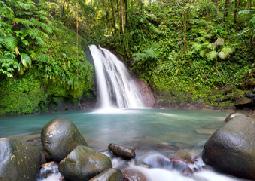
Mercer, J. Kelman, H. Alfthan, B. and Kurvits, T. (2012) Ecosystem-based adaptation to climate change in Caribbean Small Islands Developing States: Integrating local and external knowledge. Sustainability ISSN 20711050. www.mdpi.com/journal/sustainability doi:10.3390/su4081908
CONCLUSION
Nature-based solutions can be an effective strategy in limiting global warming to well below 20C - preferably 1.50C. Since these nature-based solutions can actively absorb CO2 emissions, their health and absorptive capacity are critical to achieving net zero emissions in the future.
The Caribbean initiatives presented here, although not exhaustive, are representative of the subregion’s

Caribbean Community Climate Change Centre (2022). Spotlighting on Caribbean Climate. Newsletter of the Caribbean Community Climate Change Centre. Capturing climate change related news and issues from a Caribbean perspective, Volume no. 01, Issue no. 2 “Food, Health and Climate Change Nexus” – Dr. C. James Hospedales and Sharon Lindo
CARICOM (2022). CARICOM Secretariat’s message to mark work biodiversity day, 22 May 2022: “Building a shared future for all life” Daily Express Newspaper (2021). IMA Studying T&T’s mangrove soil for carbon storage. https://trinidadexpress.com/ business/local/ima-studying-t-t-s-mangrovesoil-for-carbon-storage/article_9409373ed868-11eb-b13f-1bed3edce023.html

Daily, G. Matson, P. (2022) Ecosystem services: From theory to implementation www. pnas.org/cgi/doi/10.1073/pnas.0804960105
Fitter, A. Elmqvist, T. Young-Haines, R.
Ozment, S.M. Gonzalez, A. Schumacher, E. Oliver, G. Morales, T. Garetner, M. Silva, G. Watson, and A. Grünwaldt (2021). NatureBased Solutions in Latin America and the Caribbean: Regional Status and Priorities for Growth. Washington D.C.: Inter-American Development Bank and World Resources Institute
Office of the President, Republic of Guyana (2010) A Low Carbon Development Strategy: Transforming Guyana’s Climate Change. https://lcds.gov.gy/wp-content/ uploads/2021/10/Low-Carbon-DevelopmentStrategy-May-2010.pdf
Tietenberg, T. (1996) Environmental and Natural Resource Economics Harper Collin College Publishers
Slinger, J. Mtive, M. and Luijendijk, A. (2021) Nature-Based Solutions for Coastal Engineering and Management United Nations Environment Programme and International Union for Conservation of Nature (2021). Nature-based solutions for climate change mitigation. Nairobi and Gland. ISBN: 978-92-807-3897-1
U.S. Department of Transportation, Federal Highway Administration (2018) White Paper: Nature-Based Solutions for Coastal Highway Resilience
14 | FOCUS
page 11)
(continued from
Figure 2: Caribbean Mangrove
(image courtesy Adobe Stock )
Figure 3: Caribbean River
(image courtesy Adobe Stock )
(continued from page 7)
FOOD SECURITY IN THE CARIBBEAN – A POLICY PERSPECTIVES (CONTINUED)
REFERENCES
ECLAC (2011), “The Economics of Climate Change in the Caribbean – Summary Report”, Santiago.
Elham Mohammadi, Simron Jit Singh, Cameron McCodic, and Jeremy Pittman (2022) “Food Security Challenges and Options in the Caribbean: Insights for a Scoping Review”, Anthropocene Science (2022) 1:91-108, Springer.

FAO, IFAD, PAHO, UNICEF and WFP (2021), “Latin America and the Caribbean – Regional Overview of Food Security and Nutrition 2021: Statistics and trends. Santiago, FAO.
Ganpat W. and Isaac W. (2015), “Impacts of Climate Change on Small Island Developing States”, IGI Global.
Hans Jansen, Adam Stern, and Eli Weiss (2015) “Linking Farmers and Agroprocessors to the Tourism Industry in the Eastern Caribbean”, The World Bank.
McElroy J.L. and De Albuquerque K. (1990), “Sustainable Small-scale Agriculture in Small Caribbean Islands”, Social and Natural Resources.
Sen Amartya (1981), “Ingredients of Famine Analysis: Availability and Entitlements”, The Quarterly Journal of Economics” Vol. 96, No. 3 (August 1981), Oxford University Press.
Tim Lang and David Barling (2012), “Food Security and Food Sustainability: Reformulating the Debate” The Geographical Journal, Royal Geographical Society.
UNCTAD (2022), “War in Ukraine Threatens to Unleash ‘Unprecedented Wave’ of Global Hunger and Destitution”, UNCTAD News.
World Bank and FAO (Food and Agriculture Organization) (2008), "Backward Linkages of Tourism in the Agriculture Sector for the OECS Countries”, World Bank.
RECENT AND UPCOMING MEETINGS 2022
MAY 31 May 2022
National Consultation - Sustainable Recovery and Resilience towards achieving the Sustainable Development Goals in Antigua and Barbuda
JULY 26 July 2022
High-level meetings on the ECLAC Caribbean Resilience Fund
List of Recent ECLAC Documents and Publications
Listed by Symbol Number, Date and Title
LC/TS.2021/210
February 2022
Proposal to establish a Caribbean Resilience Fund: A segregated portfolio trust fund
LC/TS.2022/16
March 2022
A review of the status of institutional mechanisms for sustainable development planning in the Caribbean
LC/CAR/TS.2022/2
May 2022
Preliminary overview of the economies of the Caribbean 2020–2021
FOCUS | 15
Issue 3 / July - Sept 2022

16 | FOCUS The Magazine of the Caribbean Development and Cooperation Committee ECLAC Subregional Headquarters for the Caribbean PO Box 1113, Port of Spain, Trinidad and Tobago Tel: 868-224-8000 E-mail: eclac-spou-pos@eclac.org vrb.al/eclaccaribbean







 Laverne Walker *
Laverne Walker *


















